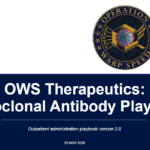Anaphylaxis has been reported after administration of influenza vaccines. Although Influenza A (H1N1) 2009 Monovalent Vaccine contains only a limited quantity of egg protein, this protein can induce immediate hypersensitivity reactions among persons who have severe egg allergy. Allergic reactions include hives, angioedema, allergic asthma, and systemic anaphylaxis. The 1976 swine influenza vaccine was associated with an increased frequency of Guillain-Barré syndrome (GBS). Evidence for a causal relation of GBS with subsequent vaccines prepared from other influenza viruses is unclear. If influenza vaccine does pose a risk, it is probably slightly more than 1 additional case/1 million persons vaccinated. Neurological disorders temporally associated with influenza vaccination such as encephalopathy, optic neuritis/neuropathy, partial facial paralysis, and brachial plexus neuropathy have been reported.
Read more →

